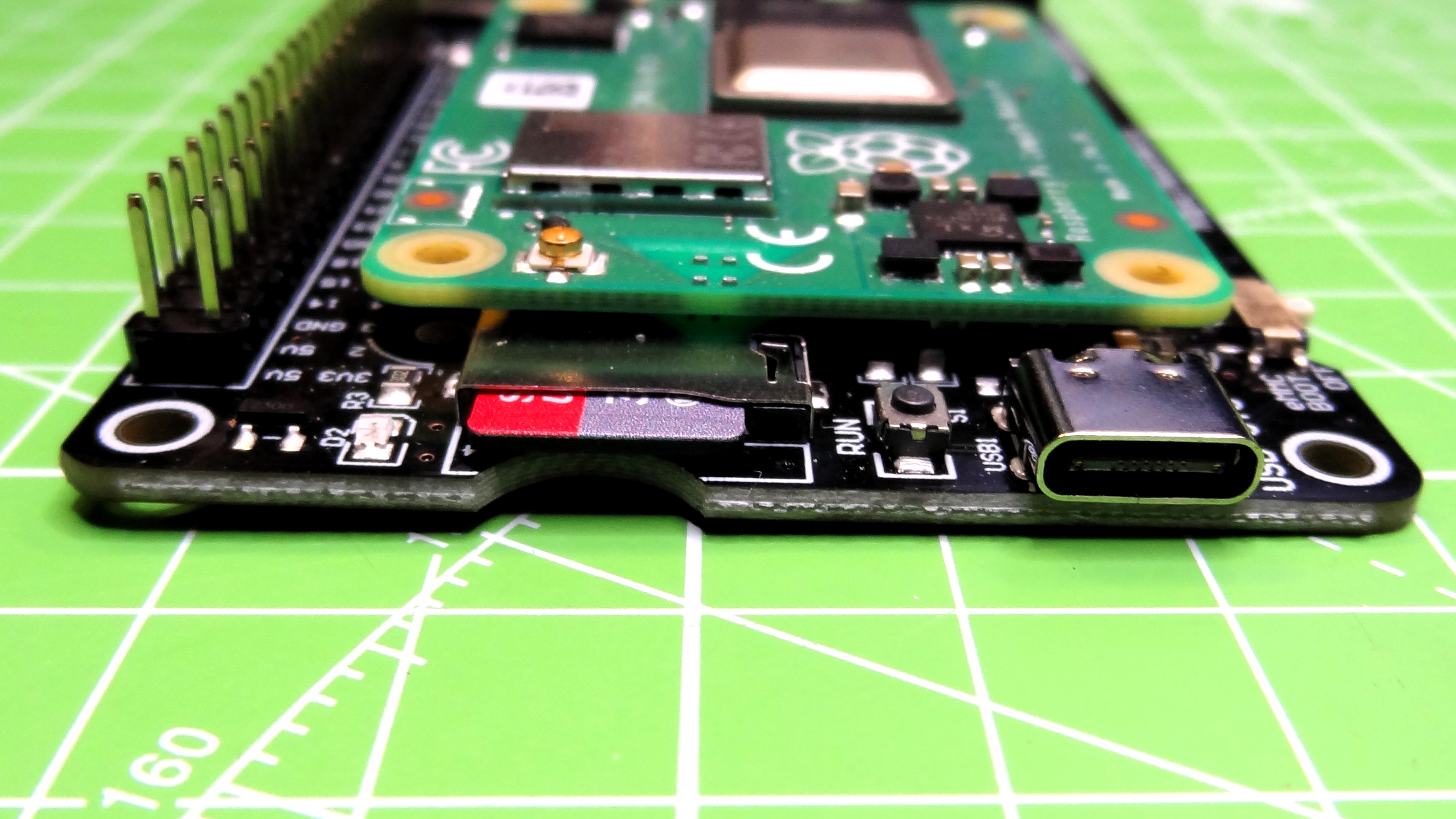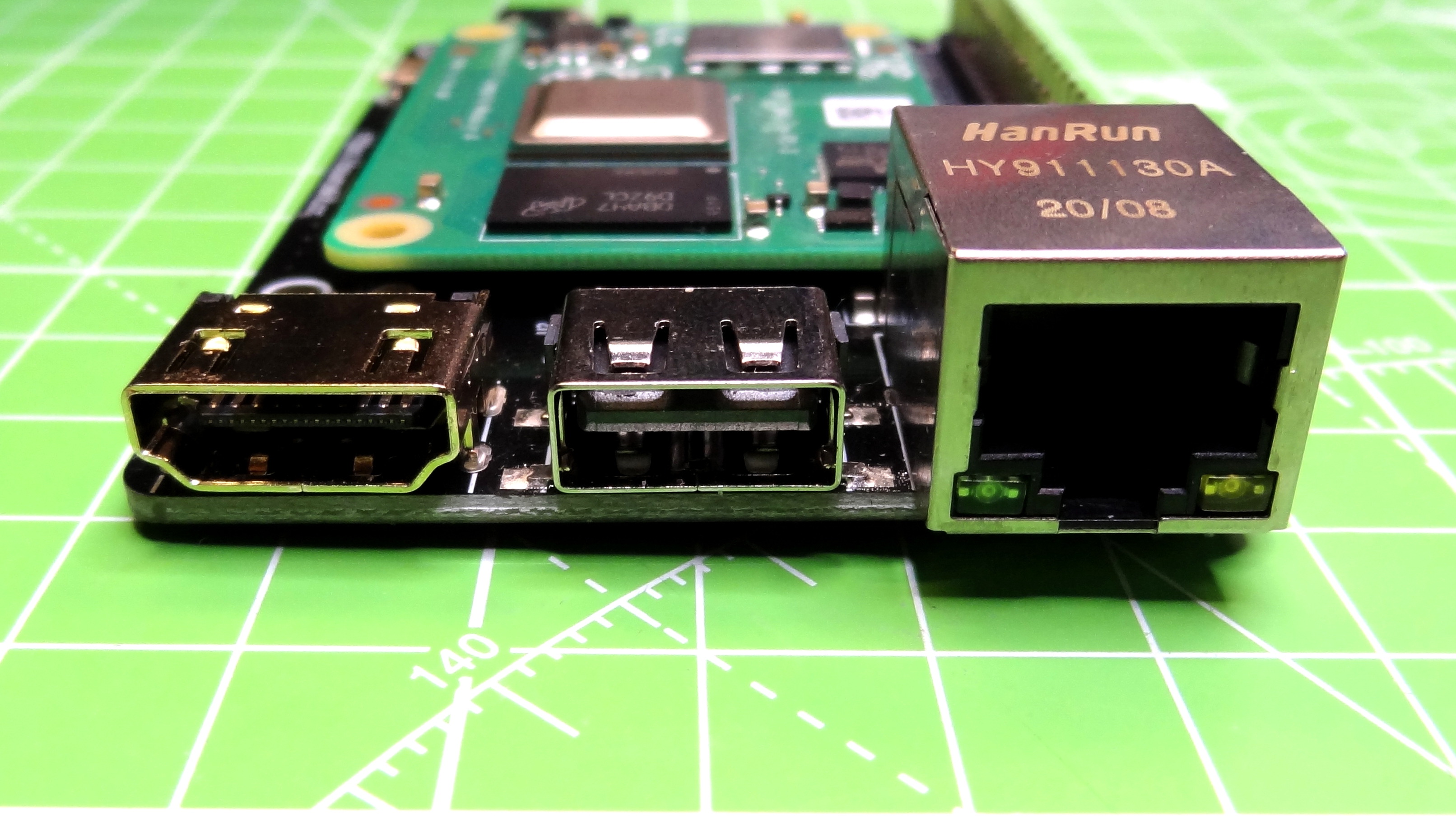Tom's Hardware Verdict
The PiTray is an interesting, if a little pointless carrier board that could serve some users well but for the vast majority of us it is redundant.
Pros
- +
+ Compatible with all Compute Module 4 boards
- +
+ Raspberry Pi form factor
- +
+ Low cost
Cons
- -
A single USB 2.0 port
- -
Port placement breaks compatibility with cases
Why you can trust Tom's Hardware
The Raspberry Pi Compute Module 4 was a game changer. It had a new form factor, multiple configuration options and PCIe compatibility. The big thing about the Compute Module 4 is that it is designed to be embedded inside a project, but to develop a project we need to use a carrier board which breaks out all of the USB, HDMI, GPIO etc for use.
The official carrier board has the most comprehensive selection of features, but this increases its size somewhat. The $14.50 PiTray Mini from Sourcekit merges the Compute Module 4 into something similar to the traditional Raspberry Pi form factor but it offers the chance to upgrade our Raspberry Pi as new models arrive. With this tantalizing option dangled before us, we had to put one on the bench for a test.
Hardware Specification
| GPIO | 40 Pin Raspberry Pi Compatible GPIO |
| Ports | 1 x Gigabit Ethernet |
| 1 x USB 2.0 Type A | |
| 1 x HDMI 2.0 | |
| 1 x USB - C (For power and eMMC flashing) | |
| 1 x MicroSD socket | |
| Buttons / Switches | eMMC Boot selection switch |
| Run reset switch | |
| Dimensions | 3.3 x 2.2 inches (85 x 56 mm) |
Design and use of the PiTray Mini
The design of PiTray Mini is clearly influenced by the typical Raspberry Pi Model B form factor and, while there is a general look along with 40 pin GPIO ,and M2.5 screw holes to secure a HAT to the board, that is where the similarities end. Starting at the left, we see a single USB C port, used for powering the board and flashing the eMMC of your Compute Module 4.
Just next to the USB C port is a micro SD card reader with a push / push mechanism, ready to eject your card halfway across the room. On the bottom left of the board is the eMMC Boot switch, and, as you may have guessed, this is used to enable booting from the eMMC flash found in Compute Module 4 boards.
If you are using a Compute Module 4 Lite, this will need to be set to Off and a microSD with Raspberry Pi OS inserted into the reader. On the far right of the board is a single HDMI 2.0 port, a USB 2.0 port and Gigabit Ethernet. There are no CSI or DSI connectors for the official cameras or display.





We tested the PiTray Mini with an 8GB Compute Module 4 Lite and a Compute Module 4 with 1GB RAM. Firstly we booted the Compute Module 4 Lite from a micro SD card and everything went well. It was as if we were using a typical Raspberry Pi 4, but with three less USB ports. We then tested a Compute Module 4 with eMMC flash storage by first using the PiTray Mini as a carrier board to flash our module. Following the instructions to mount the eMMC module using the usbboot application, we easily flashed the latest Raspberry Pi OS image directly to the eMMC module. We flicked the eMMC boot switch to On and powered up the board and in a few moments we saw the familiar Raspberry Pi desktop.
As PiTray Mini has a 40 pin GPIO, we tested it with a series of boards from Pimoroni and Adafruit. Firstly we tested the Unicorn HAT, a 64 Neopixel grid on a HAT. This installed with no issues but the example code would not run, claiming that the Compute Module 4 was an unknown board type. The same issue hit us with Adafruit’s MPR121 board. Pimoroni’s Explorer HAT Pro, on the other hand, worked with no issues. Are these issues caused by the PiTray Mini? No, these compatibility issues are with the Compute Module 4 itself. Basic GPIO control, for example via the Python RPI.GPIO and GPIO Zero libraries worked with no issues.
Get Tom's Hardware's best news and in-depth reviews, straight to your inbox.
Possible uses for the PiTray Mini
With a Raspberry Pi layout you would think that the PiTray Mini would be the ideal means to have the power of a Raspberry Pi 4, with the possibility of upgrading to later models when they arrive. This is largely true and, if you need this flexibility, then at this price, the PiKit Mini is a strong option.
If you are looking for a cheap means for a home server, then the Gigabit Ethernet and powerful quad core processor are a plus, but the USB 2.0 port will slow down your disk access. The PiTray Mini is a strong contender for an upgradeable media center.
Bottom Line
We had high hopes that PiTray Mini would be the start of an upgrade route for a Raspberry Pi that would be compatible with future Compute Modules. Our hopes were not dashed as PiTray Mini just works with our Compute Module boards. But if we were hoping to use the GPIO with the best Raspberry Pi HATs then right now there are some issues which PiTray Mini has brought to light, namely compatibility with Compute Module 4 boards is patchy at best. For the price, PiTray Mini is worth investigating but we wouldn’t look to base a project on it just yet.

Les Pounder is an associate editor at Tom's Hardware. He is a creative technologist and for seven years has created projects to educate and inspire minds both young and old. He has worked with the Raspberry Pi Foundation to write and deliver their teacher training program "Picademy".
